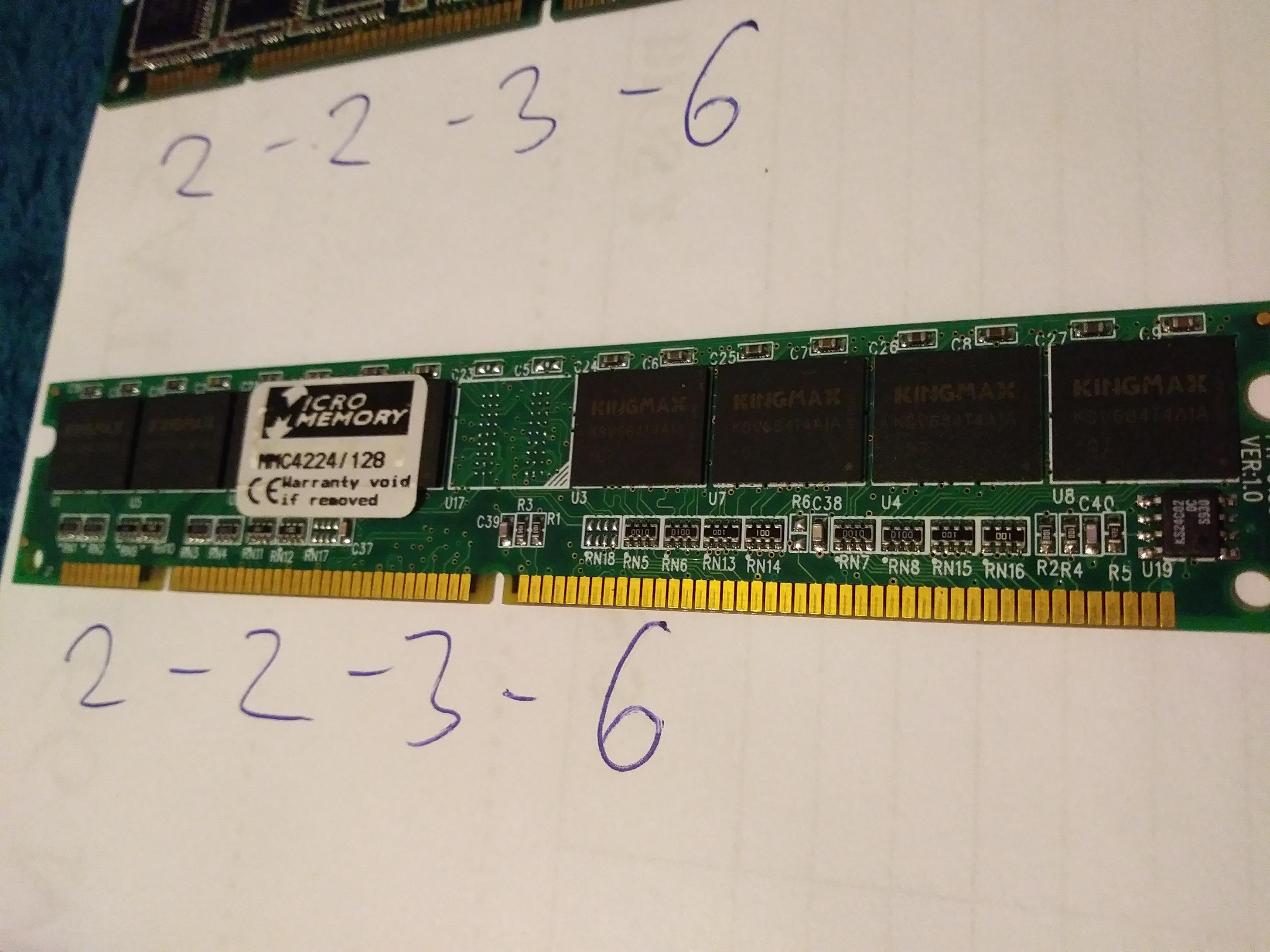First post, by VooDooMan
- Rank
- Member
A solid SDR RAM PC133 is required to achive high CPU frequencies. Let’s check which sticks are good for overclocking and which are not 😉
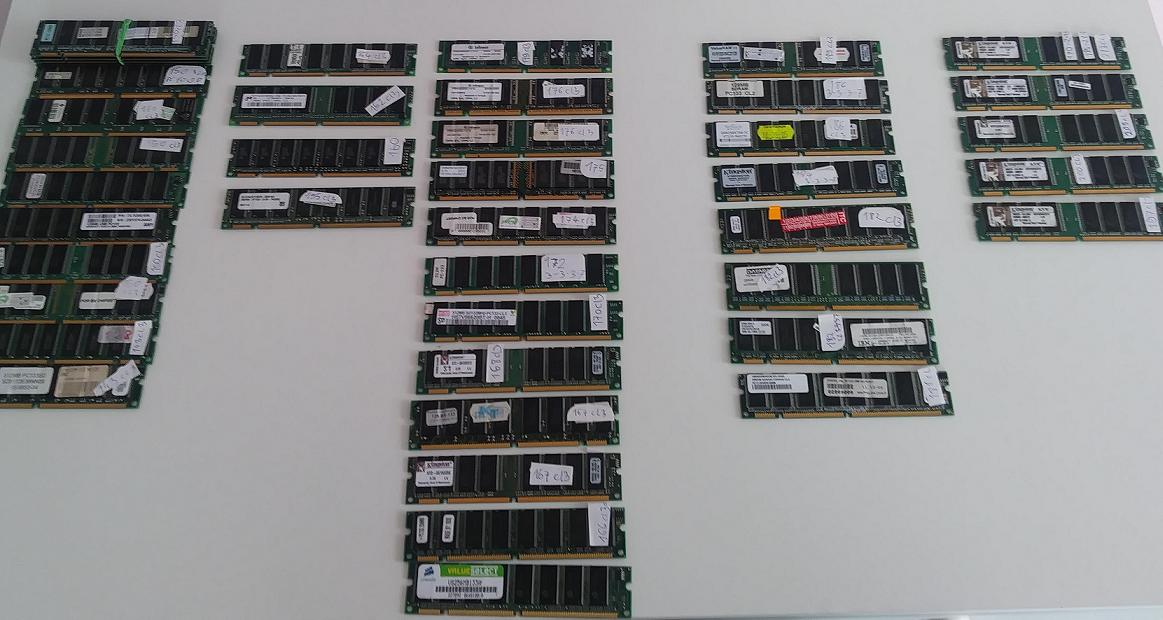
My motivation for this project:
- I already had a Pentium III CPU, which goes up to 235 MHz... so I wanted to choose a memory that would reach the same level 😜 Possibly at the lowest timings and in synchronous mode 😁
- At home I have a lot of unsorted sticks, so I wanted to check how far the can go 😀
- There is one socket 370 motherboard... which has the correct dividers at 166 MHz so I wanted to try out how it performs at PC 166 MHz CL 2-2-2-6 😜
- I was hoping that after these tests it would be easier for others to identify their fast stick 😀
How do I test?
- 2 Different boards: ASUS Tusl2C + ABIT ST6 (3 different ones)
- I used: MemTest86 and PCMark2002 / 3DMark2001SE for testing
- First, each memory underwent initial verification on ASUS TUSL2-C at 166 FSB cl 3-3-3-7: I checked each one on these settings, if it posts I proceed with MemTest.
- If a given memory passed the tests on 166 CL3-3-3-7 without errors, it went on for testing on ABIT ST6 at higher FSB.
- If there were errors on TUSL2-C at 166, I marked the memory as PC 150.
- If a memory didn’t even post on TUSL2-C st 166 FSB, I checked it on lower settings.
- Everything worked at the default voltage.
What memeries did I test?
- Every possible(ECC, non-ECC), of course only PC133, I see no point in testing PC 100.
- Most of the moemories were with Infineon, Hynix/Hyundai, Samsung, Mosel chips
- All together more than 40 sticks were tested.
I’ve divided the results into 5 groups depending on the scope of overclocking potential:
I. Ususal ones 133 -150 MHz
II. Good ones 150 +
III. Solid ones 166+
IV. Extraordinary 180 +
V. Extreme 195+
I) The ustal ones are the most with 8ns and some with 7,5ns
Silcom: SIL16M08Cb7532
Vigour: VC5364161UT-08
Micron: 48LC16M8A2 75E
MDT: 33S25680-7,5

II) The good ones overclock between the range: 150-166 MHz:
HYNIX/Hundai: HY57V64820HG T-H, HY57V28820HCT-H oraz HY57V28820HCT-K
Samsung: K4S560832C-TC75
M.tec: TBS6408B4E-6
NANYA: NT56V66100OT-75
SMART: TMM3V64M4I8U-5
AM1: 11280816A -7A
POINTEC: PT481616TG-6
LGS: GM72V16821CT10K

III) These are the solid ones they range from 166 MHz do 179 Mhz
CORSAIR: 32M8ABCG PS1300648
Micron: 48LC16M8A2 75B oraz 48LC32M8A2 7ED
Samsung: K4S560832E-TC75 oraz K4S560432C-TC75
Mosel: V54c365804VCT7
Lei: LES64408TA-7,5
HYUNDAI: GM72V66841ET75
Infineon: HYB39S128800CT-7,5

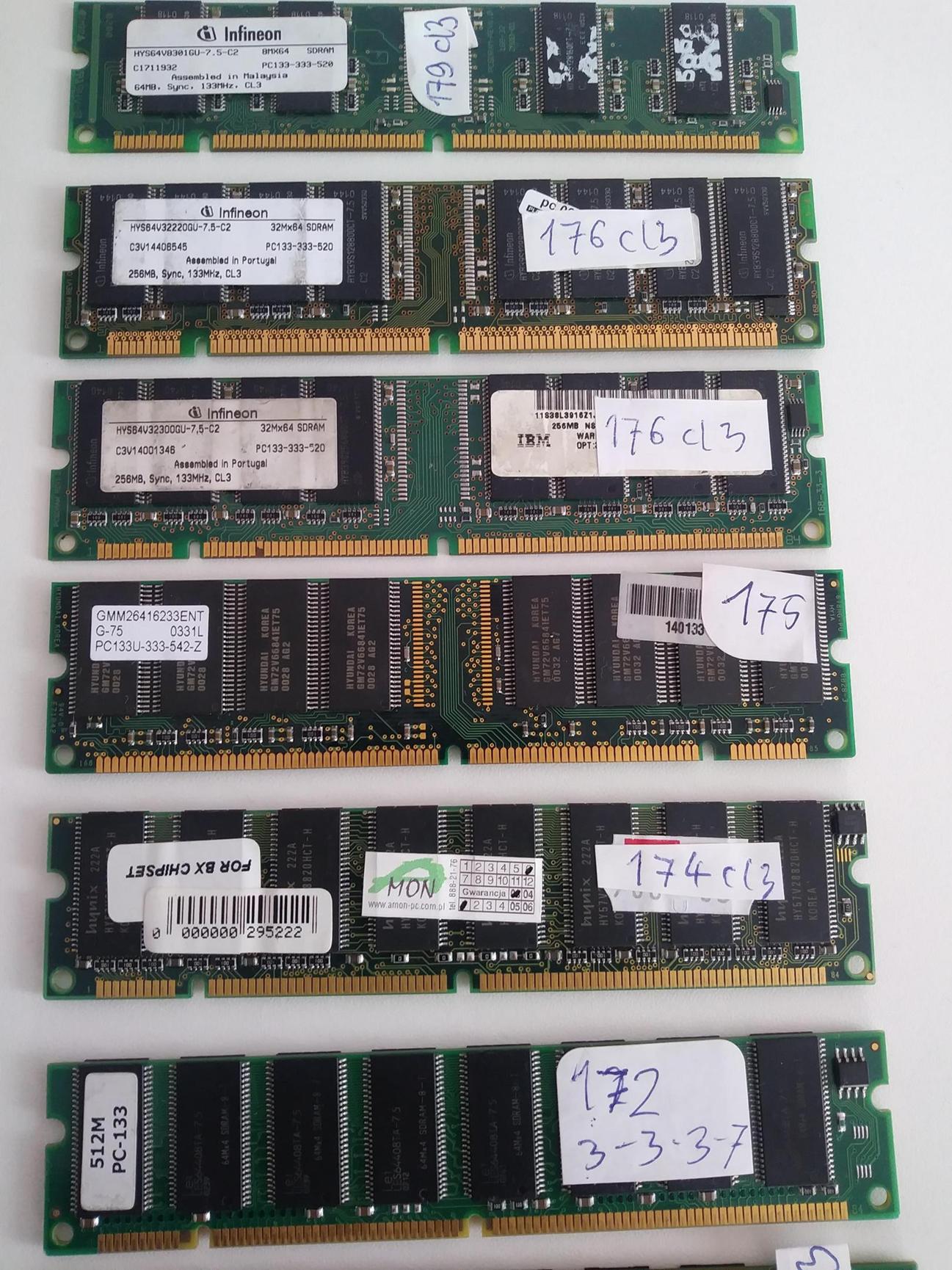
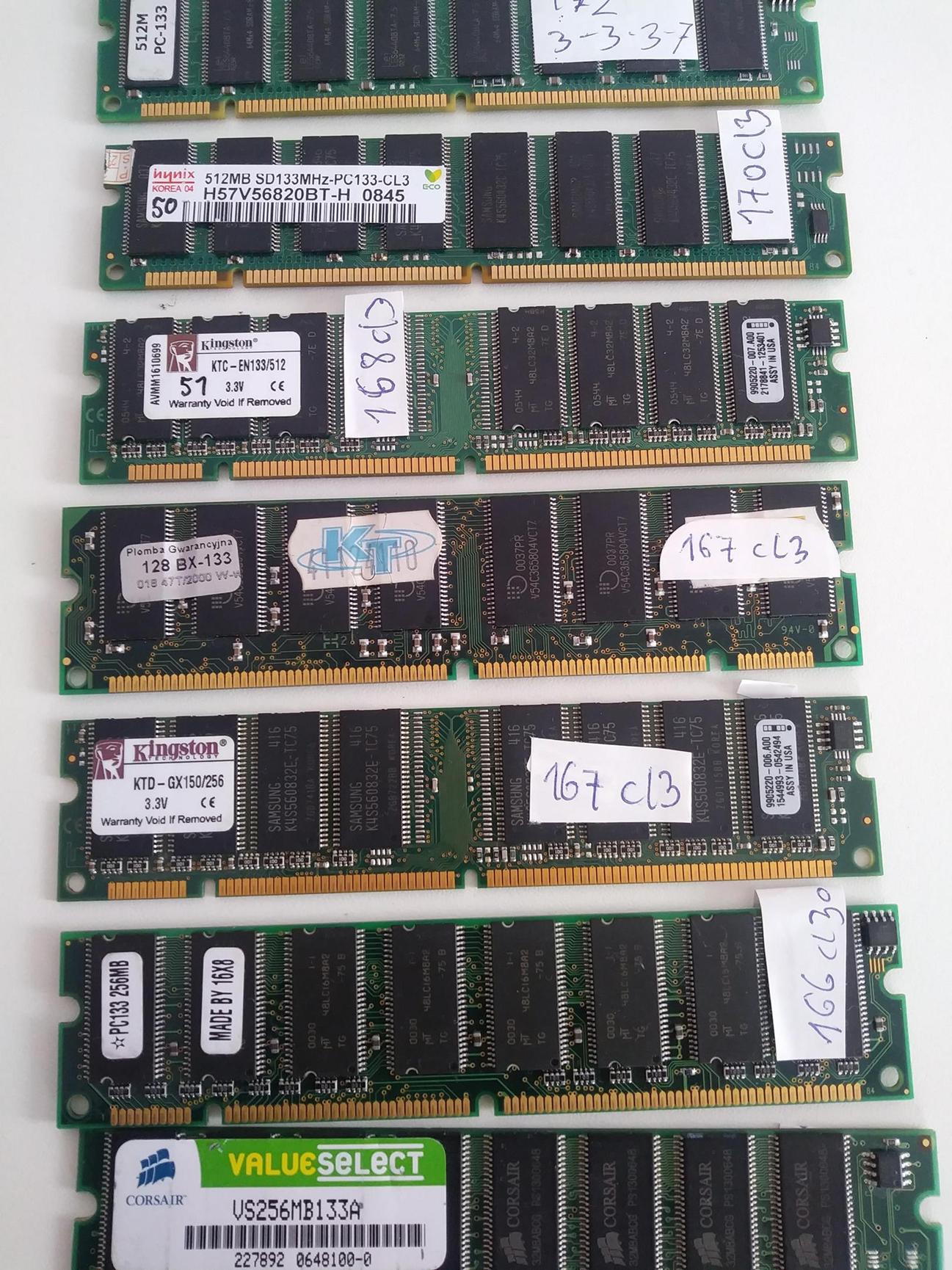
IV) The extraordianry ones (they should be able to reach 166 MHz at CL2-2-2-7/6)
Mosel Vitelic: V54C3256804VBT7PC - 181 MHz CL 3-3-3-7
Hyundai/HYNIX: HY57V28820AT-H - 182 MHz CL 3-3-3-7
Infineon: HYB39S128800CT-7 – od 182 do 189 MHz CL 3-3-3-7
VM: VT56SD32M8PC-7 – 186 MHz CL 3-3-3-7
Settec: PM72V28841CT-6K – 186 CL CL 3-3-3-7
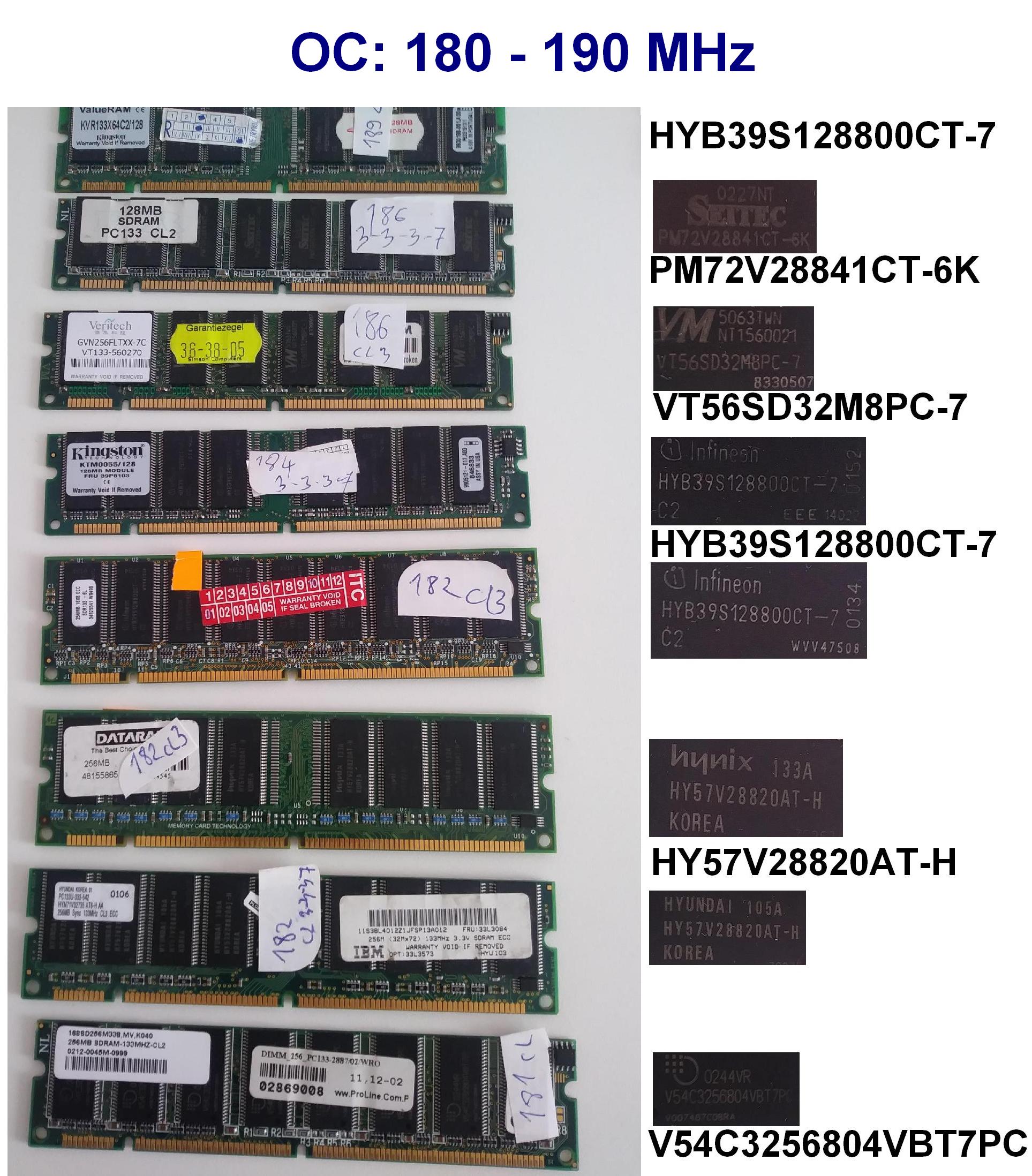
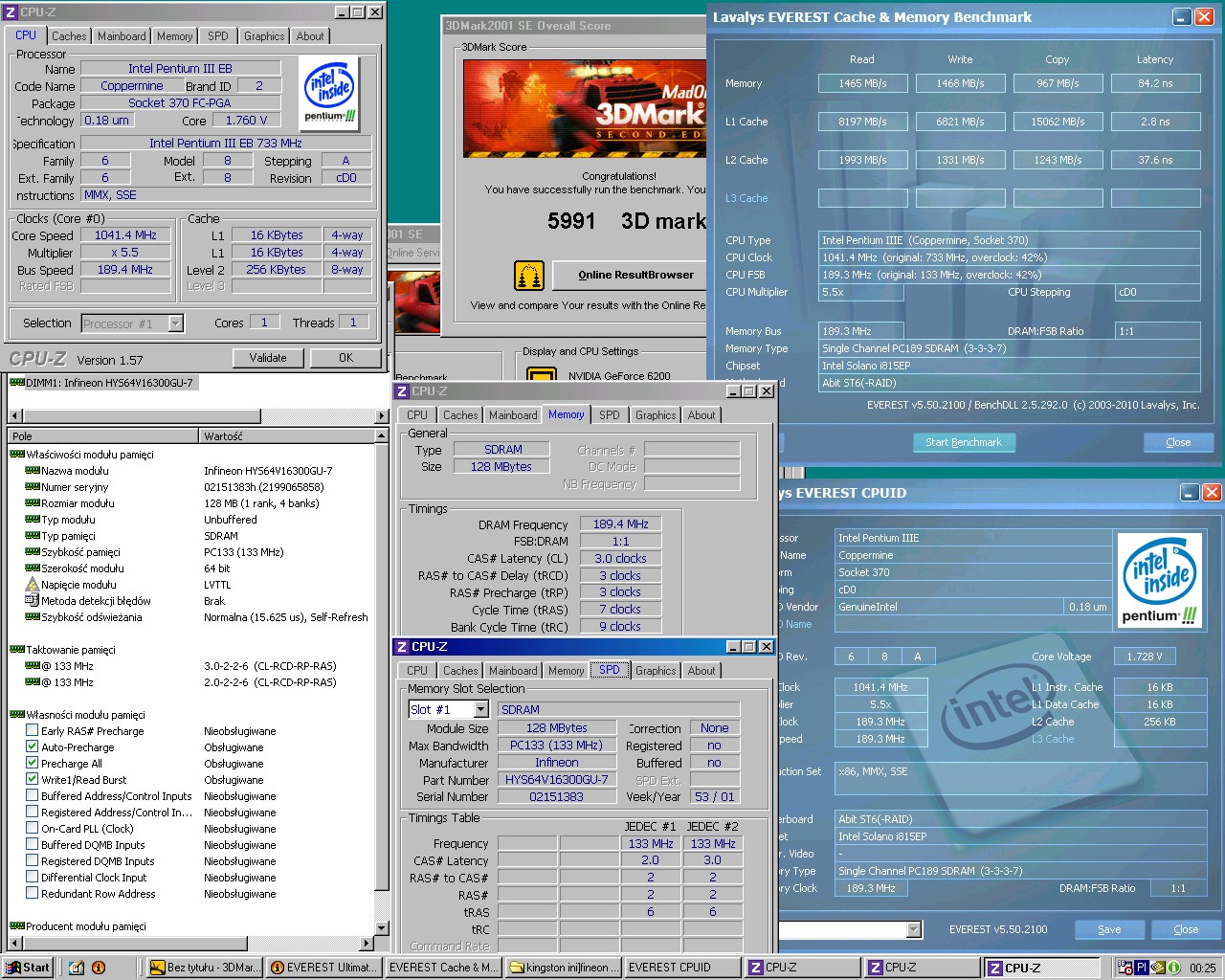
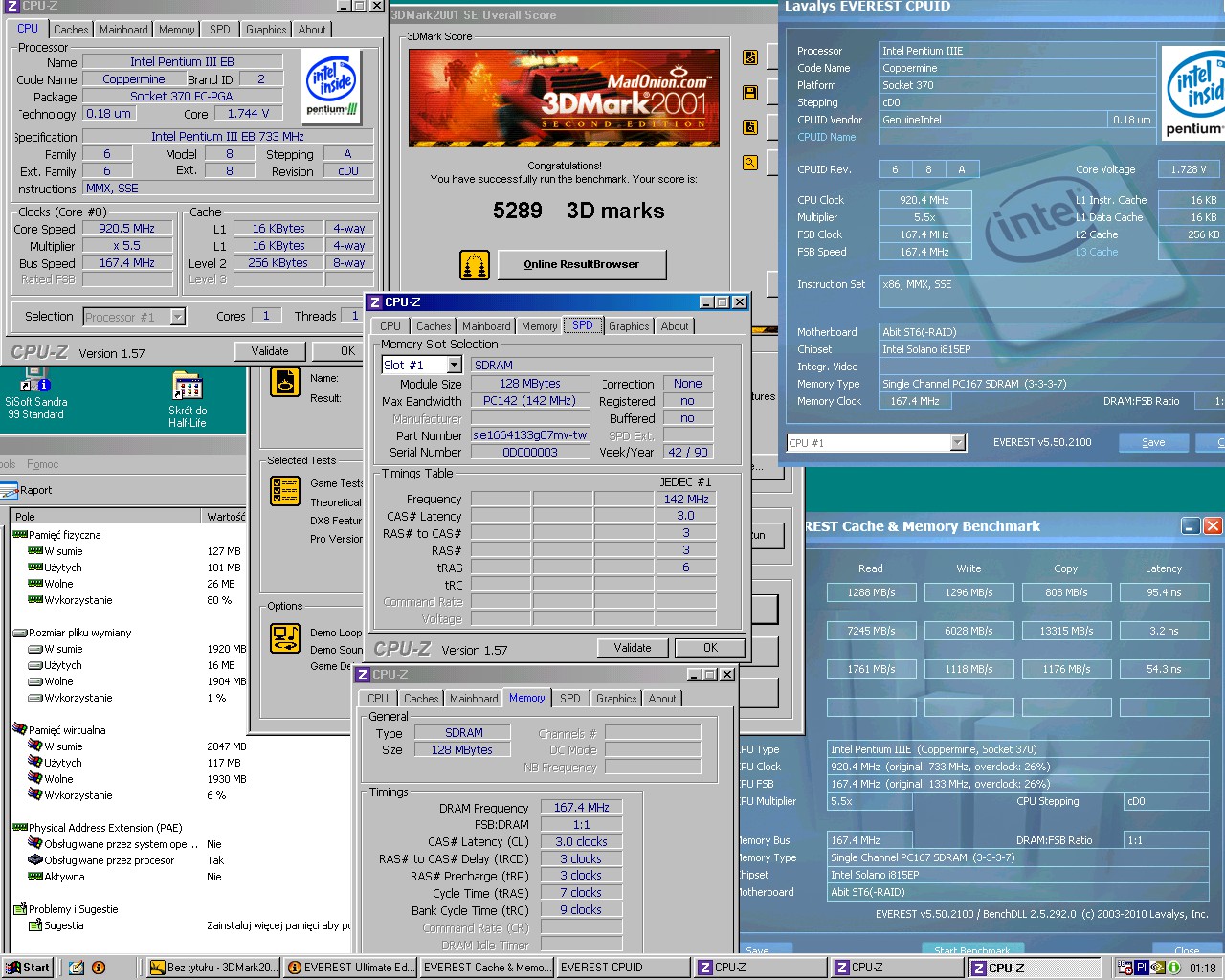
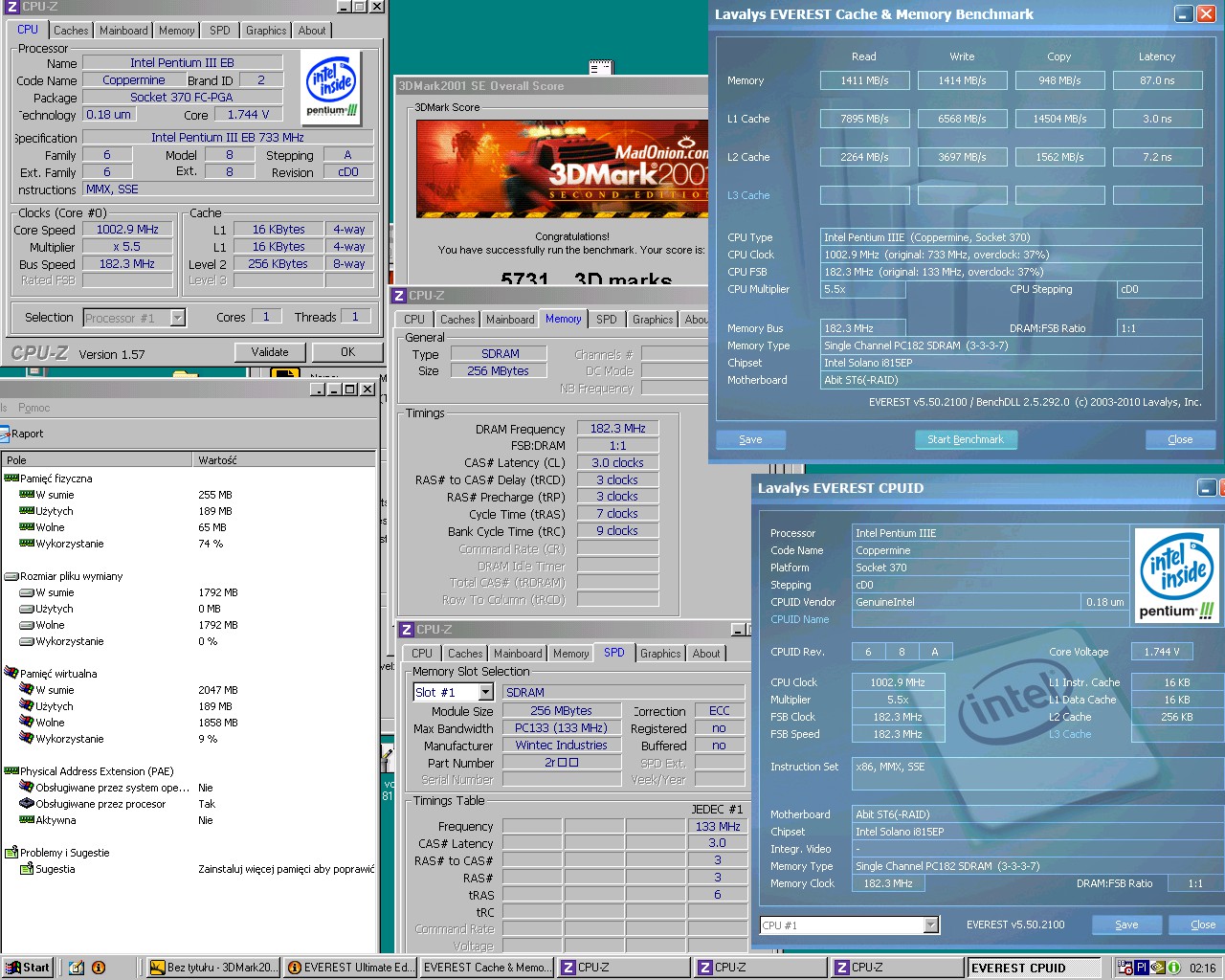
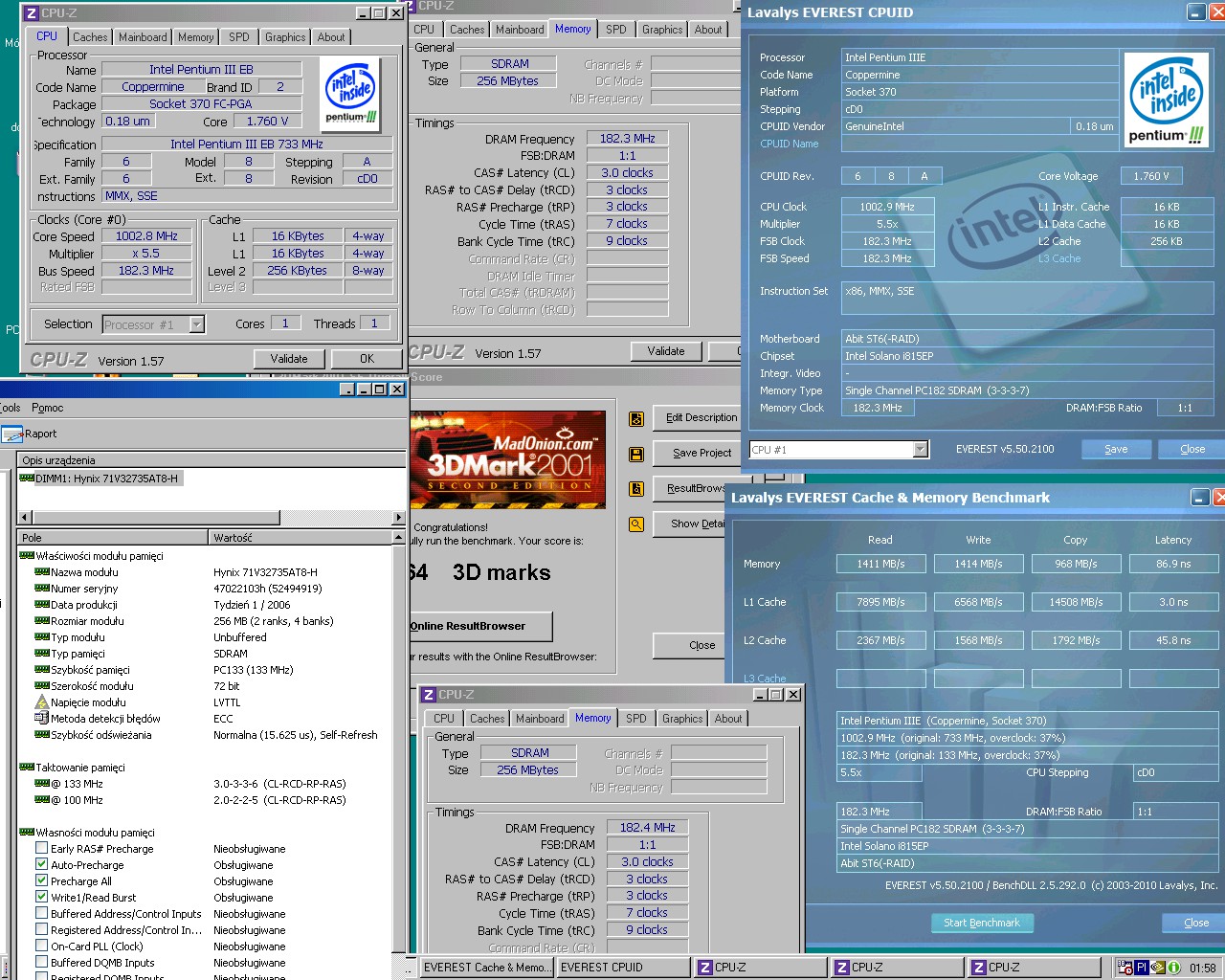
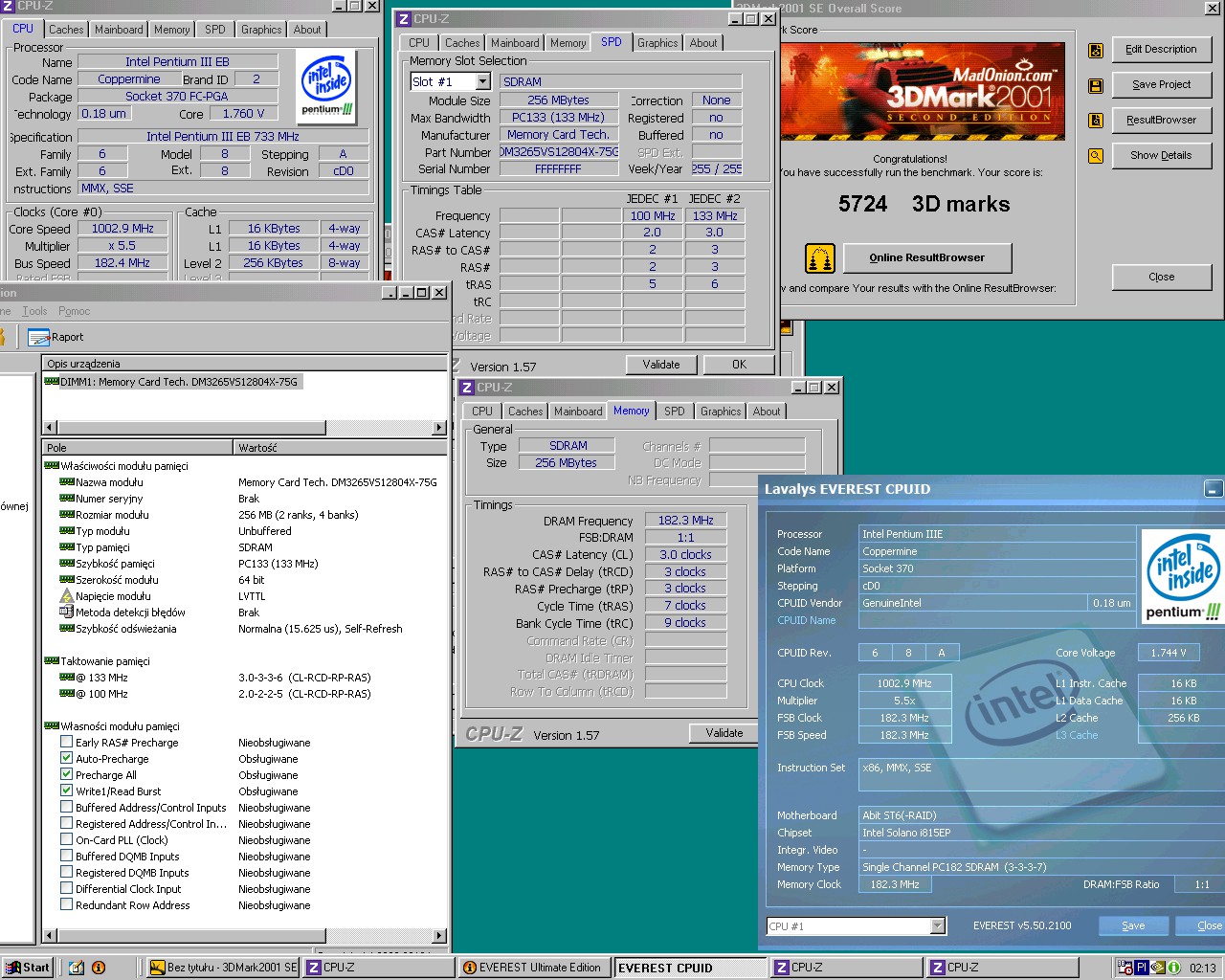
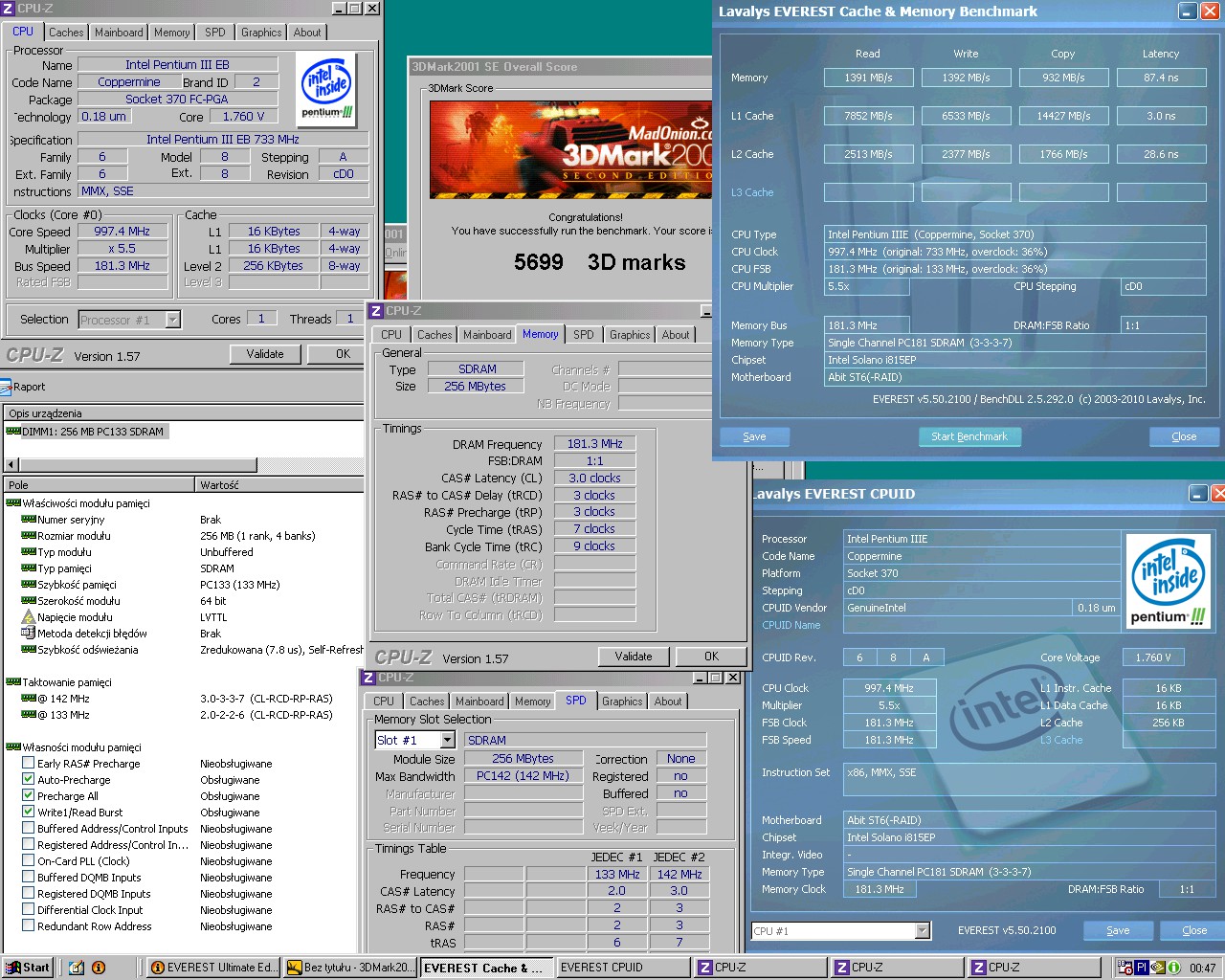
V) And finally the EXTREME ones. Those are the best in my experience (from 195 up to 210+ and more...)
Qimonda: HYB39S256800FE-7 datasheet
Infineon: HYB39S256800FE-7 datasheet
Mosel Vitelic: V54C3256804VDI7PC
It's easy to notice that Infineon's and Qimonda's chips are labeled the same;) From what I understand, these companies merged at some point and then one completely absorbed the other one.
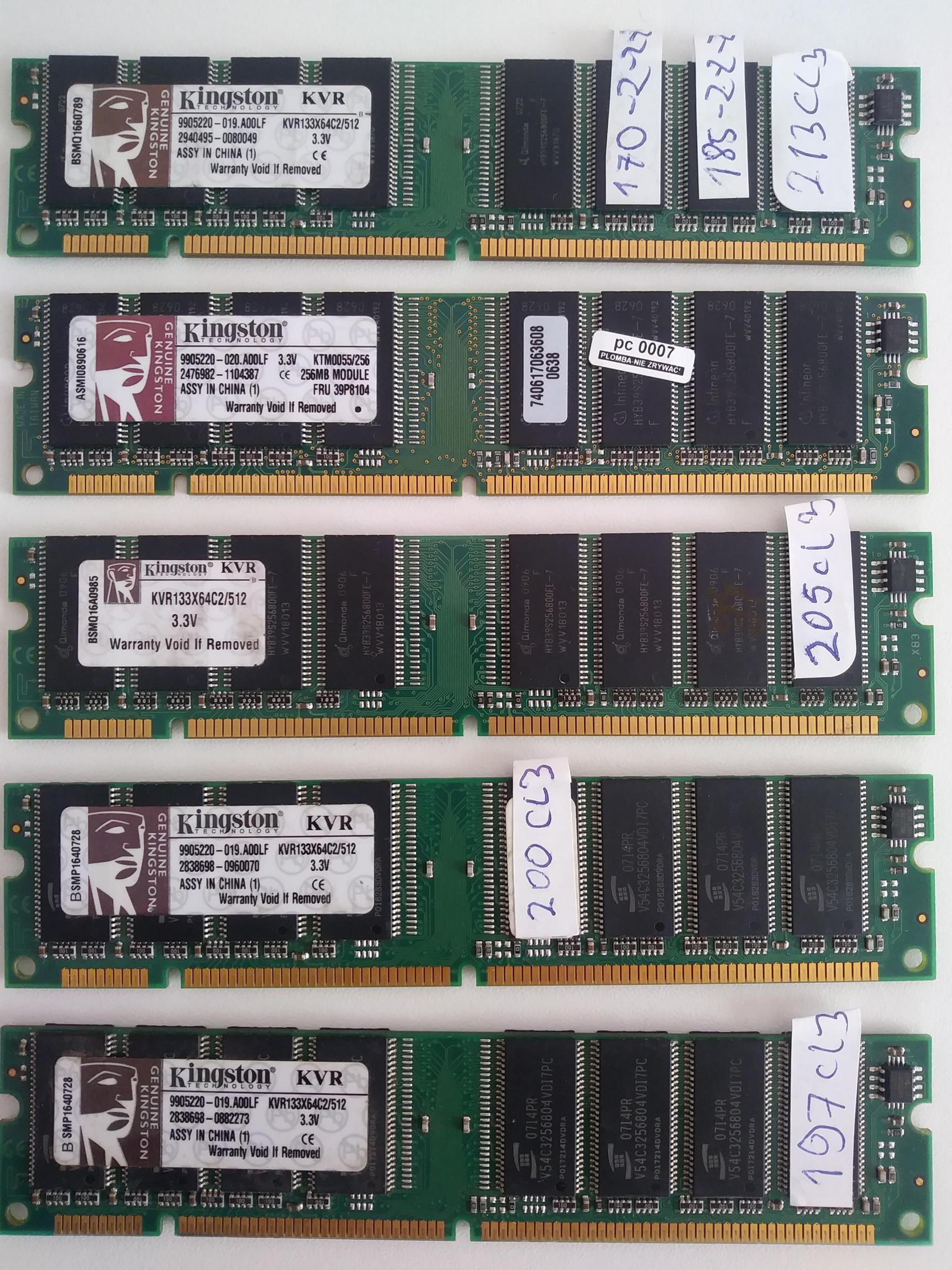
There were only 5 memories that exceeded 195 MHz at CL3-3-3-7 on my ABIT ST6 and I would like to focus on them 😉 The first one MOSEL V54C3256804VBT7PC did only 197 maximum:

The second one did a little bit better scoring 200 MHz:

However, the Infineon / Qimonda chips turned out to be unbeaten, as they easily exceed 200 MHz 😉
The first one by Qimonda reaches 205 MHz:

The one by INFINEON got up to 210 MHz:
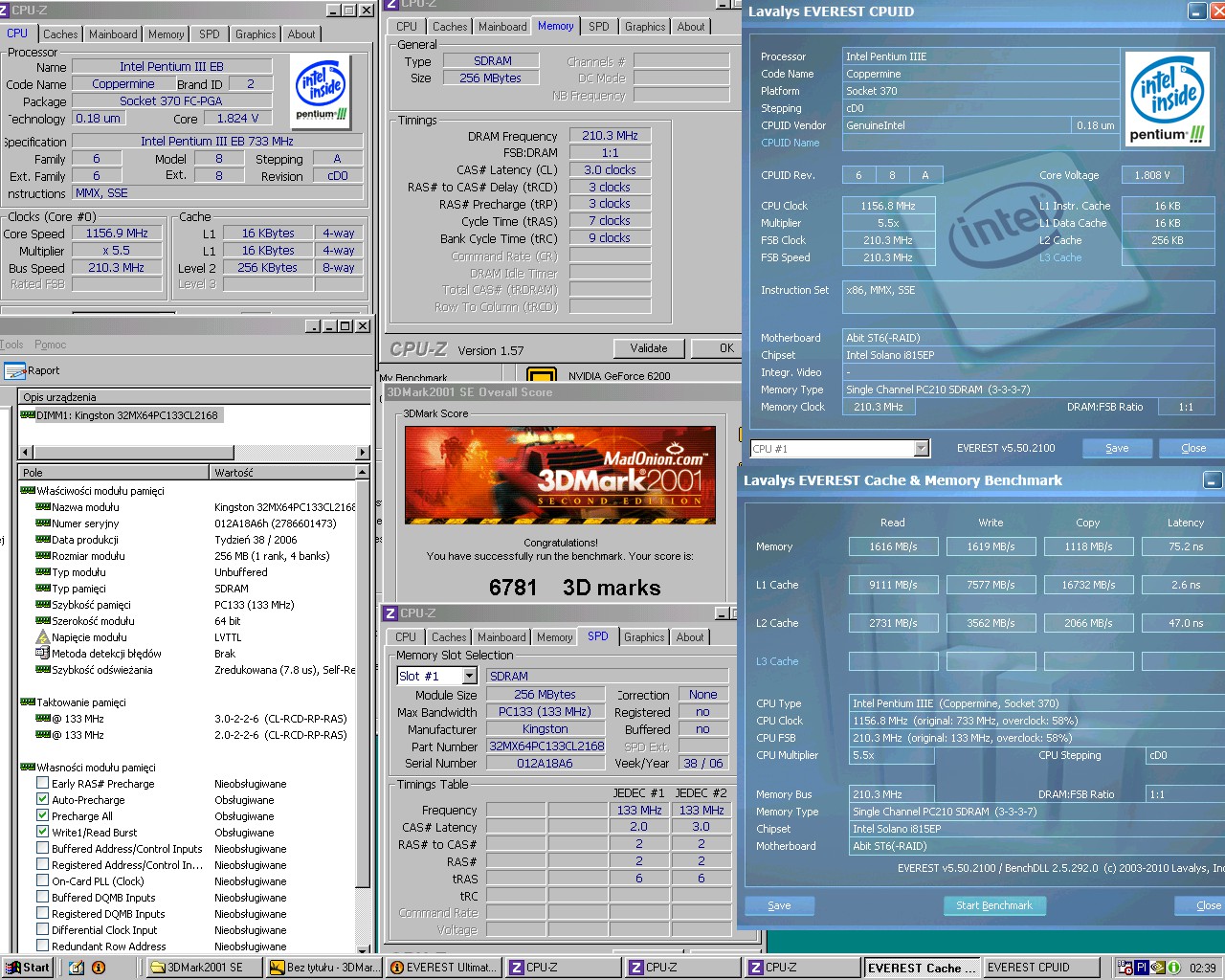
The last one by Qimonda HYB39S256800FE-7 also sis 210 MHz:

and Eventually ended up at 213 MHz:
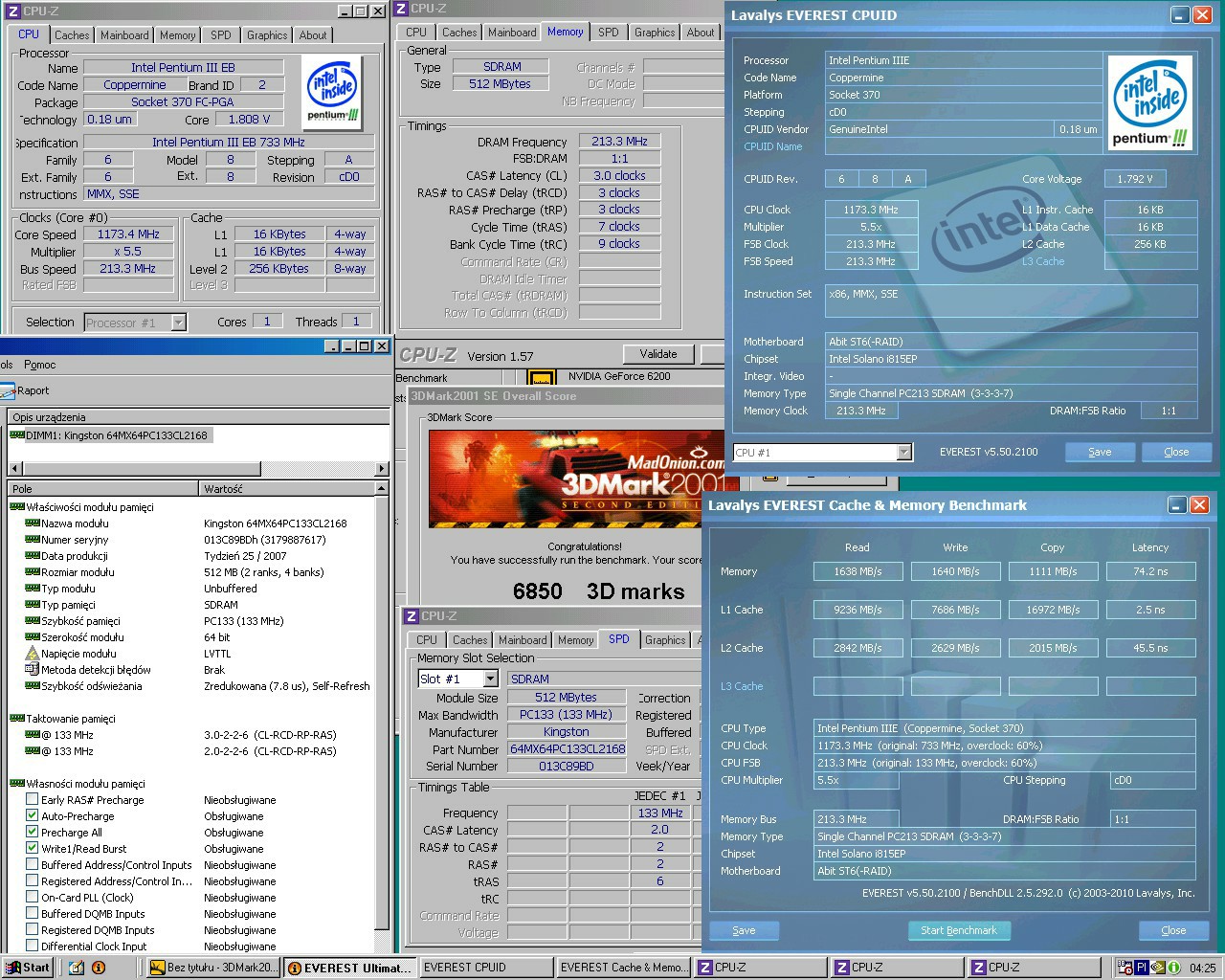
And at this point I think my motherboard somehow limits me, or the memories need more voltage! I have the impression that they would go higher in the proper hands 😉
I’ve seen on the internet that the records on those HYB39S256800FE-7 get up to250 MHz...
I wish I could “squeeze 1 MHz more”, but since it’s something I’ve done for the first time in my life and without especially good conditions or a workshop, it's not that bad 😀
In the end, I wanted to check how far those memories will go at CL2-2-2-7 and 2-2-2-5.
The maximum stable FSB at CL2-2-2-7 was 185 MHz:
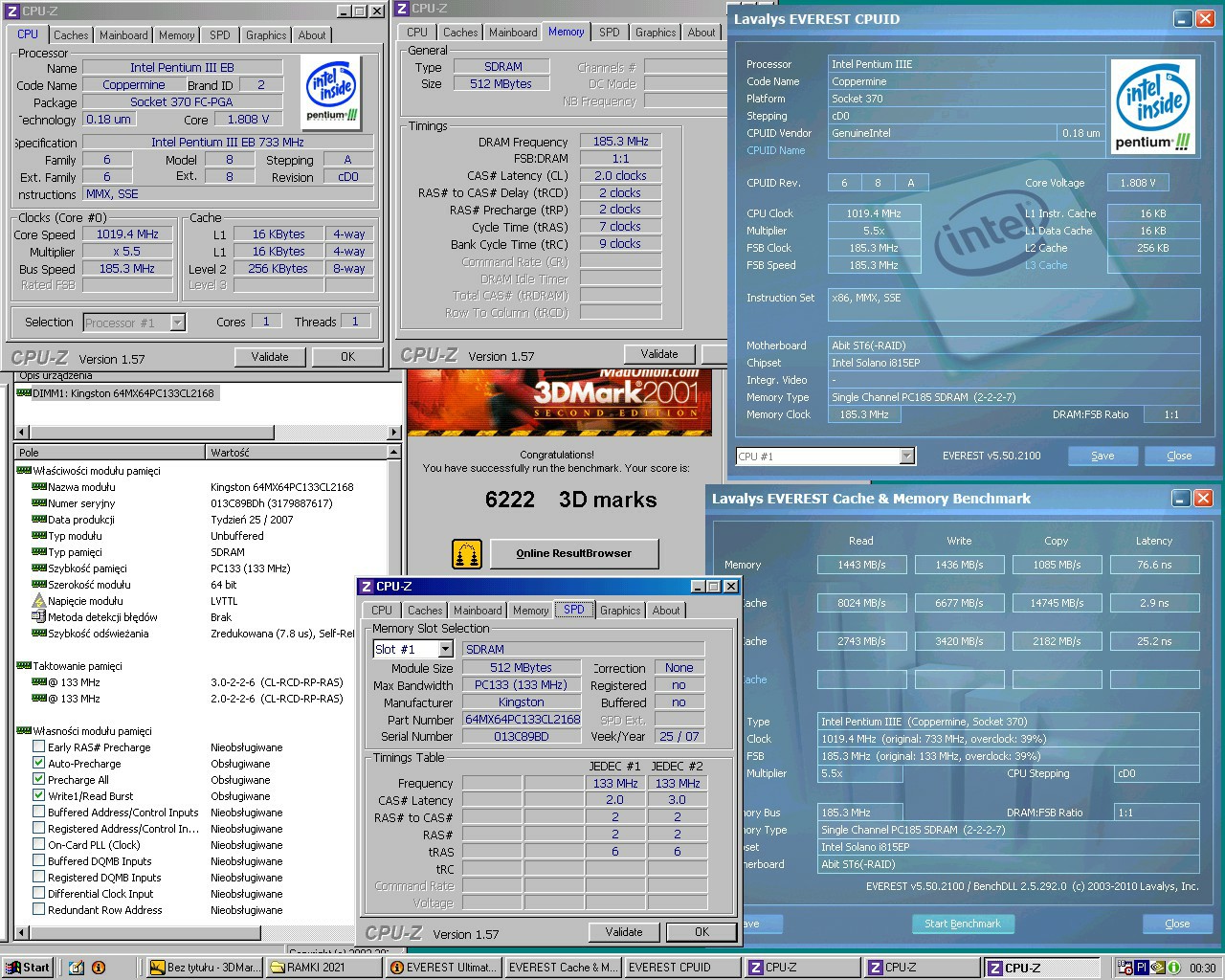
The maximum stable FSB at CL2-2-2-5 was 170 MHz:
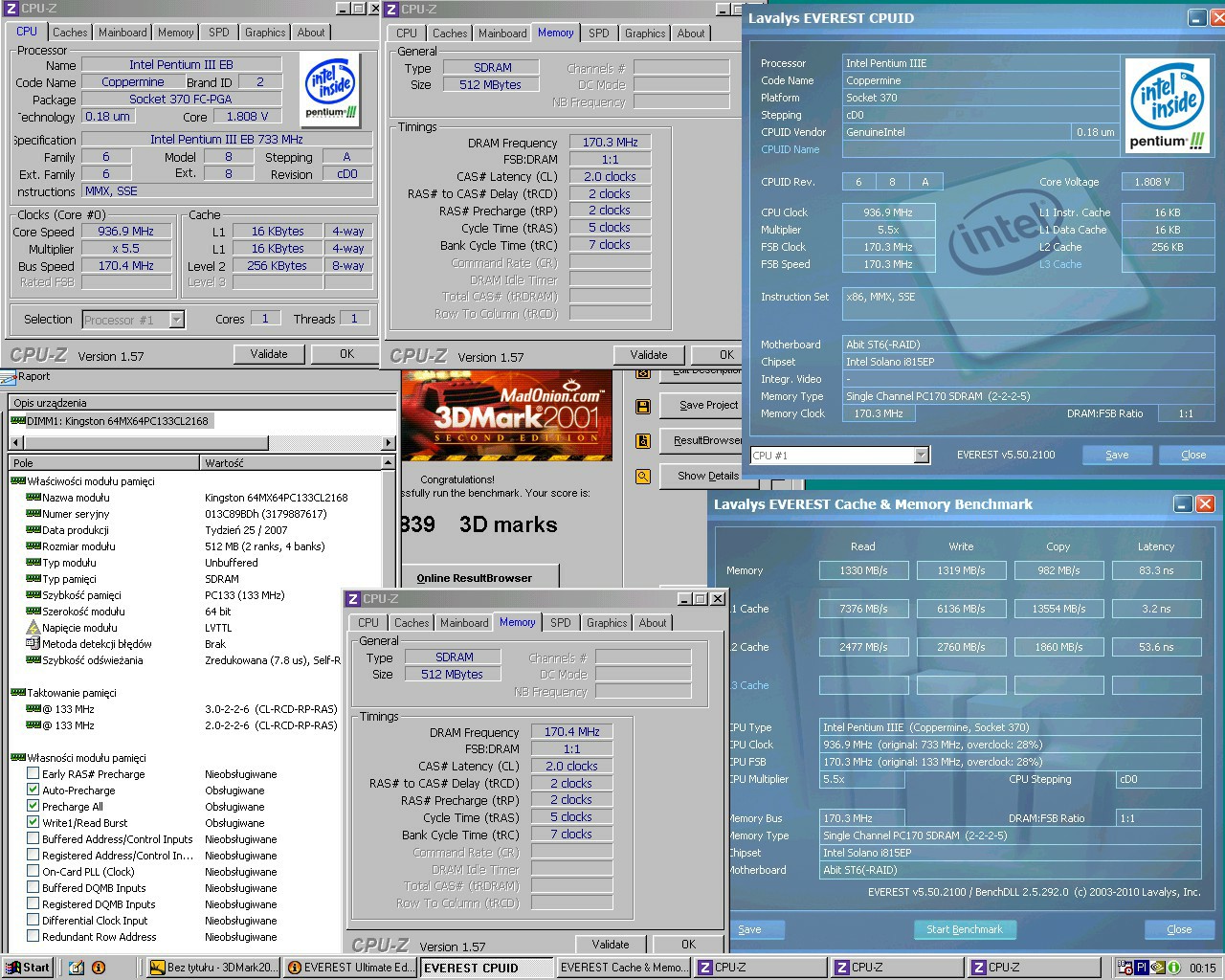
Below there is a list of memories from the same manufacturers but with different markings and stickers and you can see how they overclock:
HYNIXes:
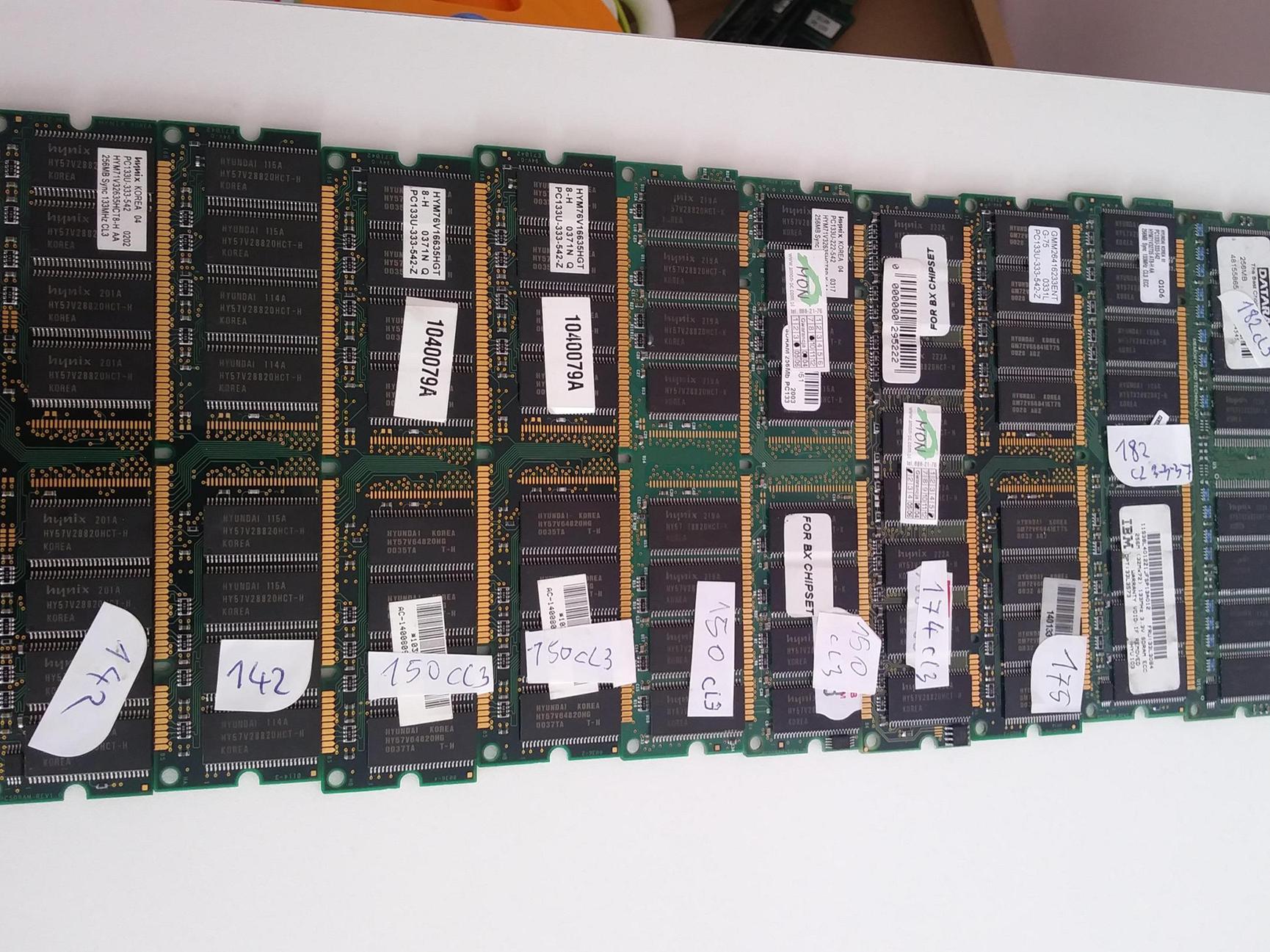
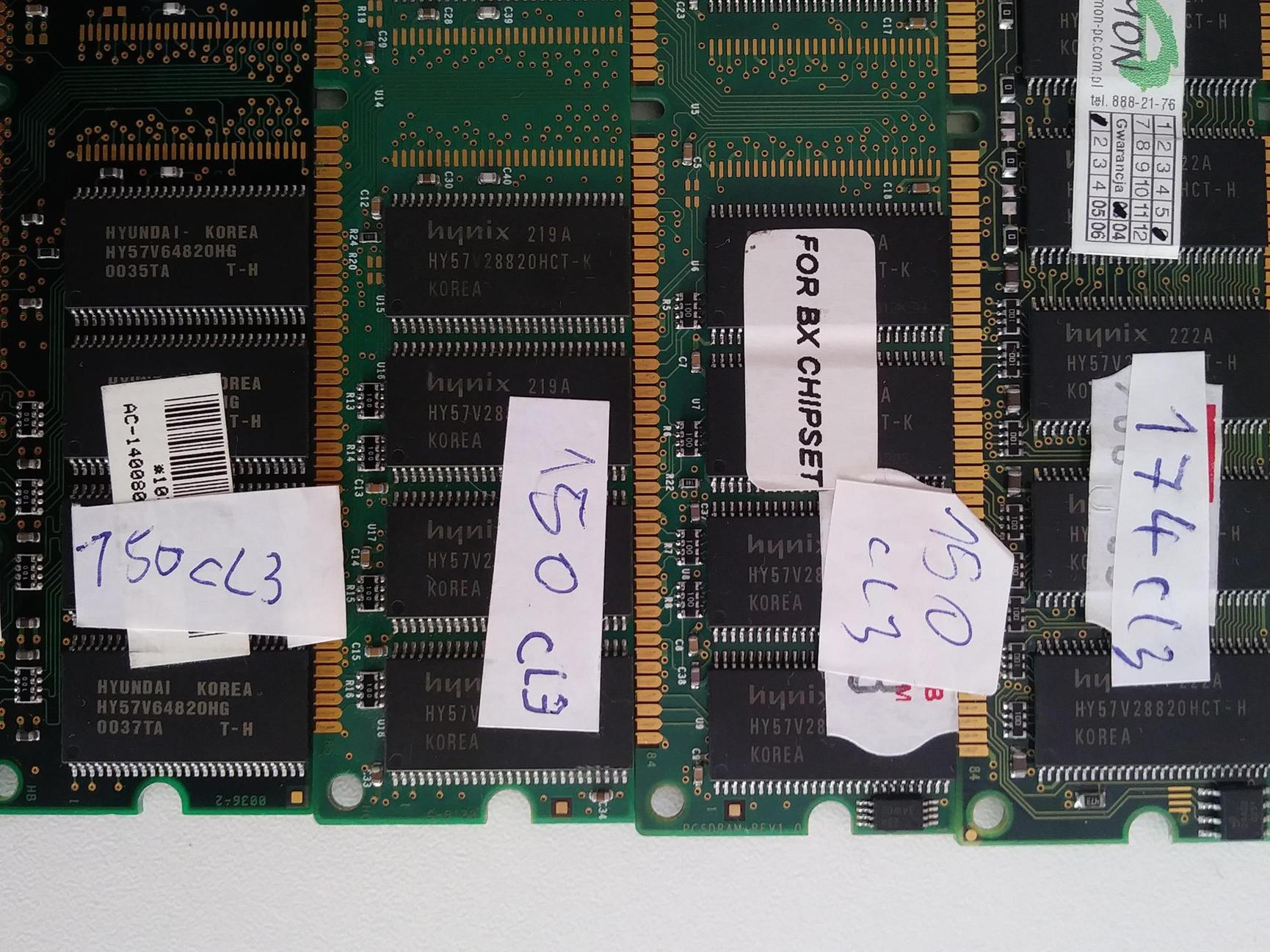
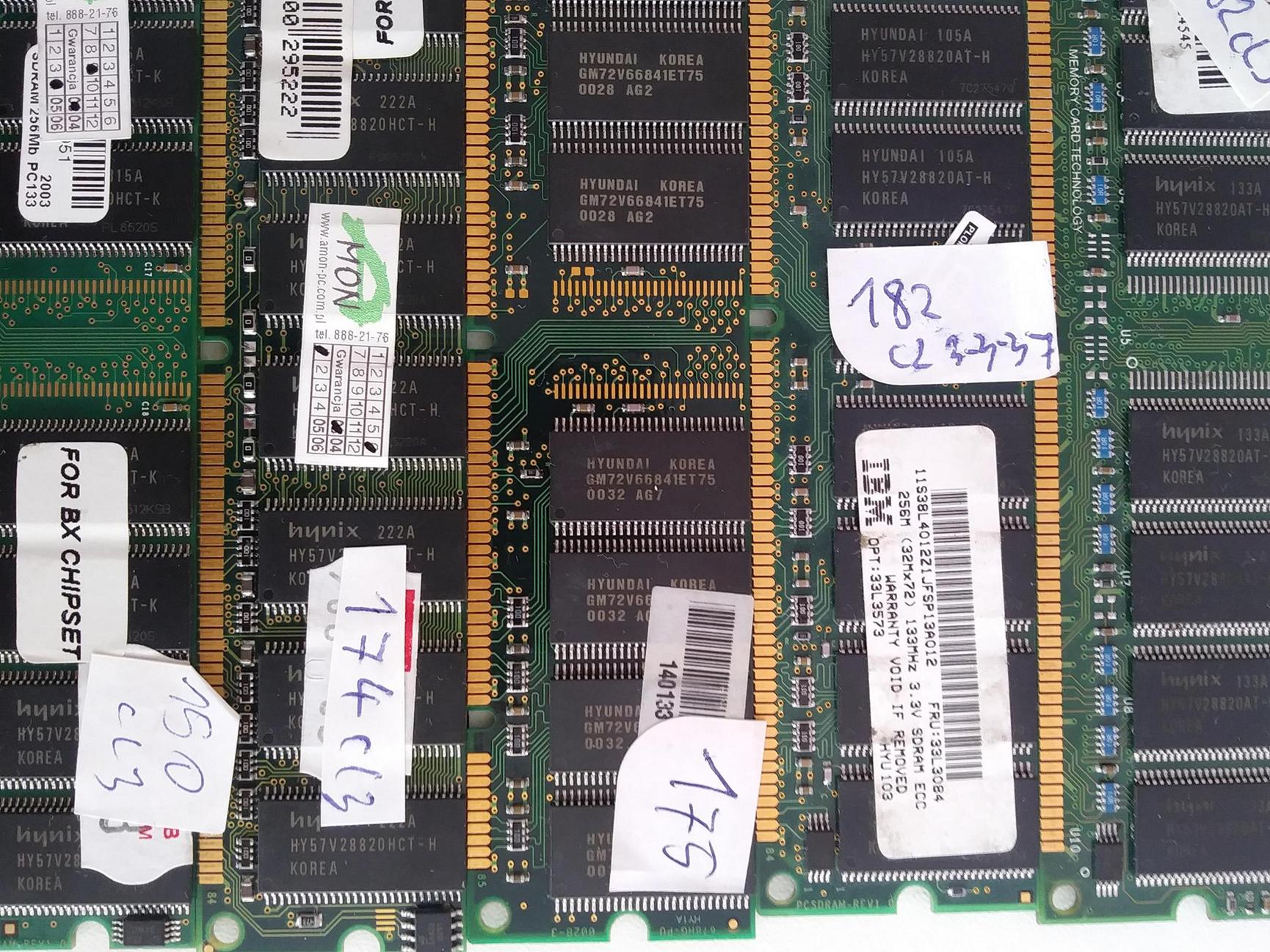
INFINEONs:
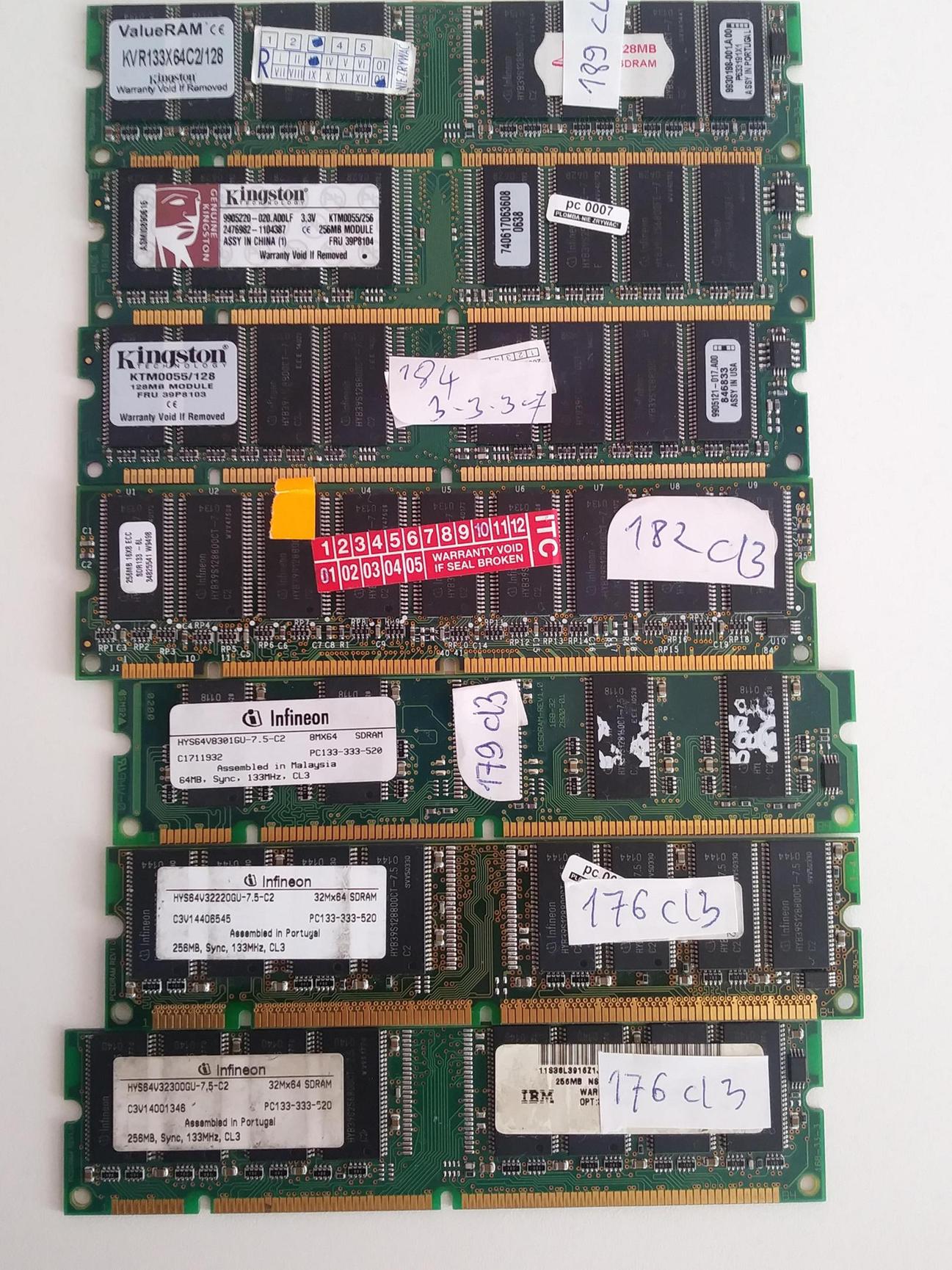
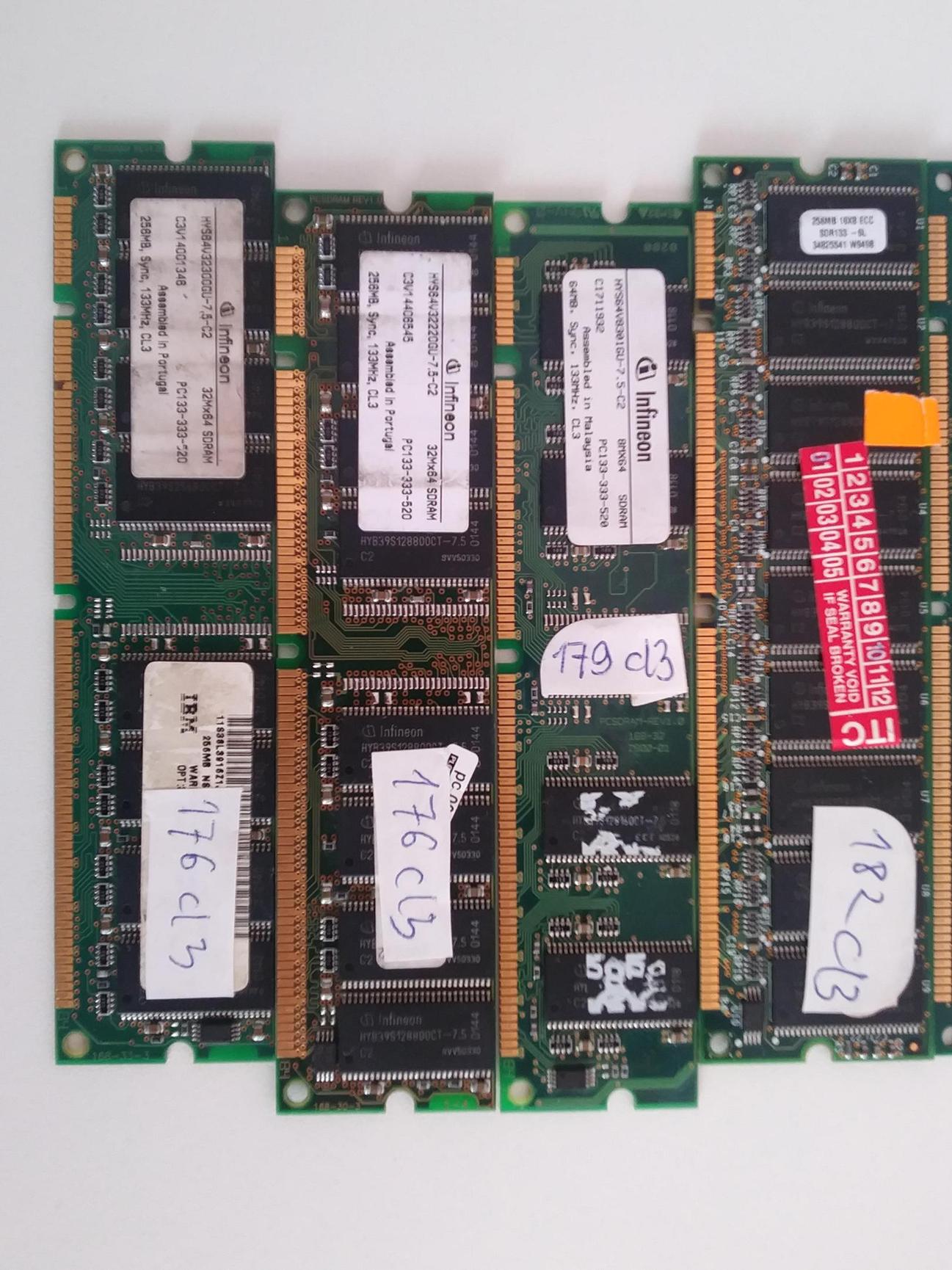
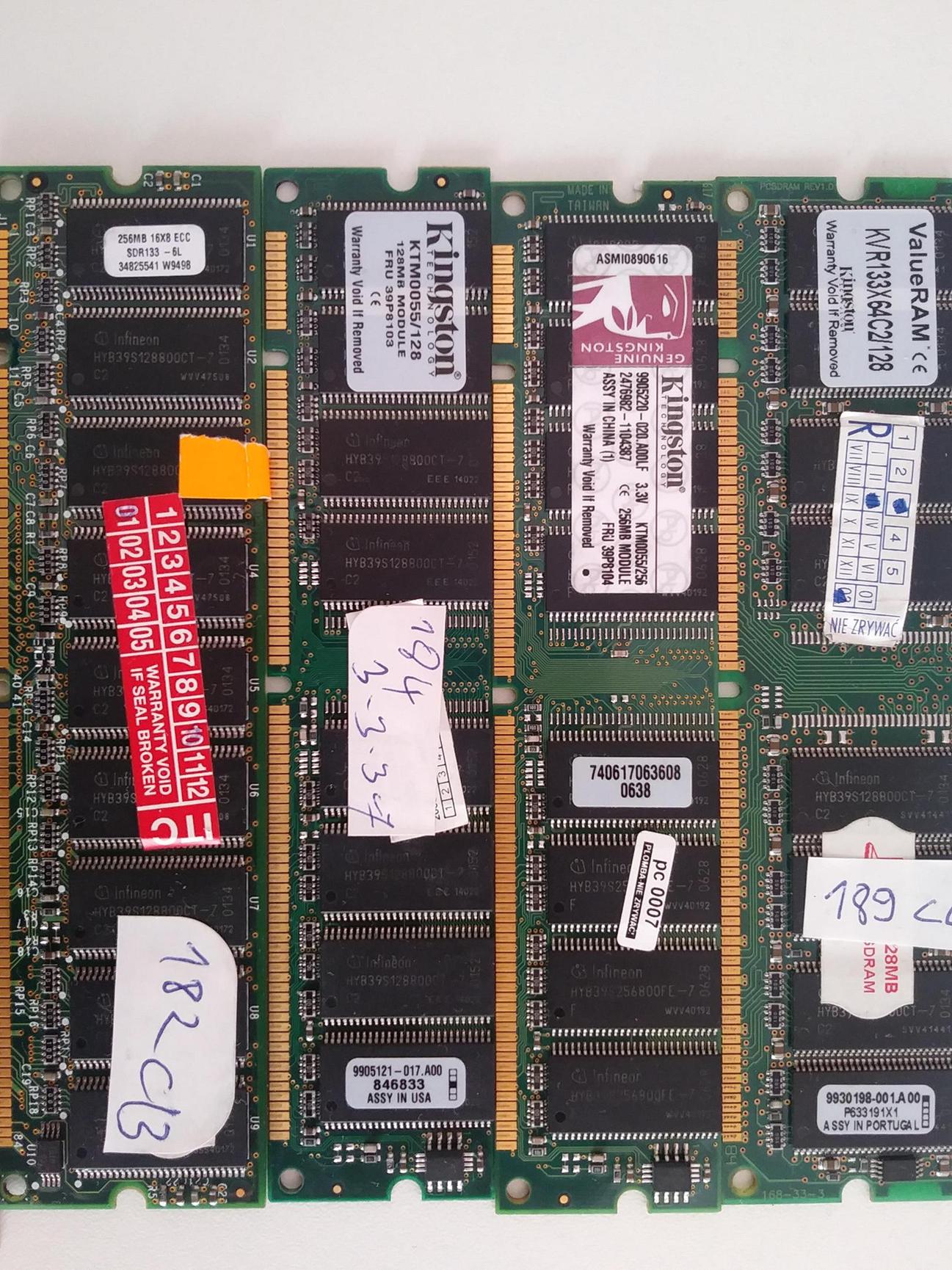
Microns:
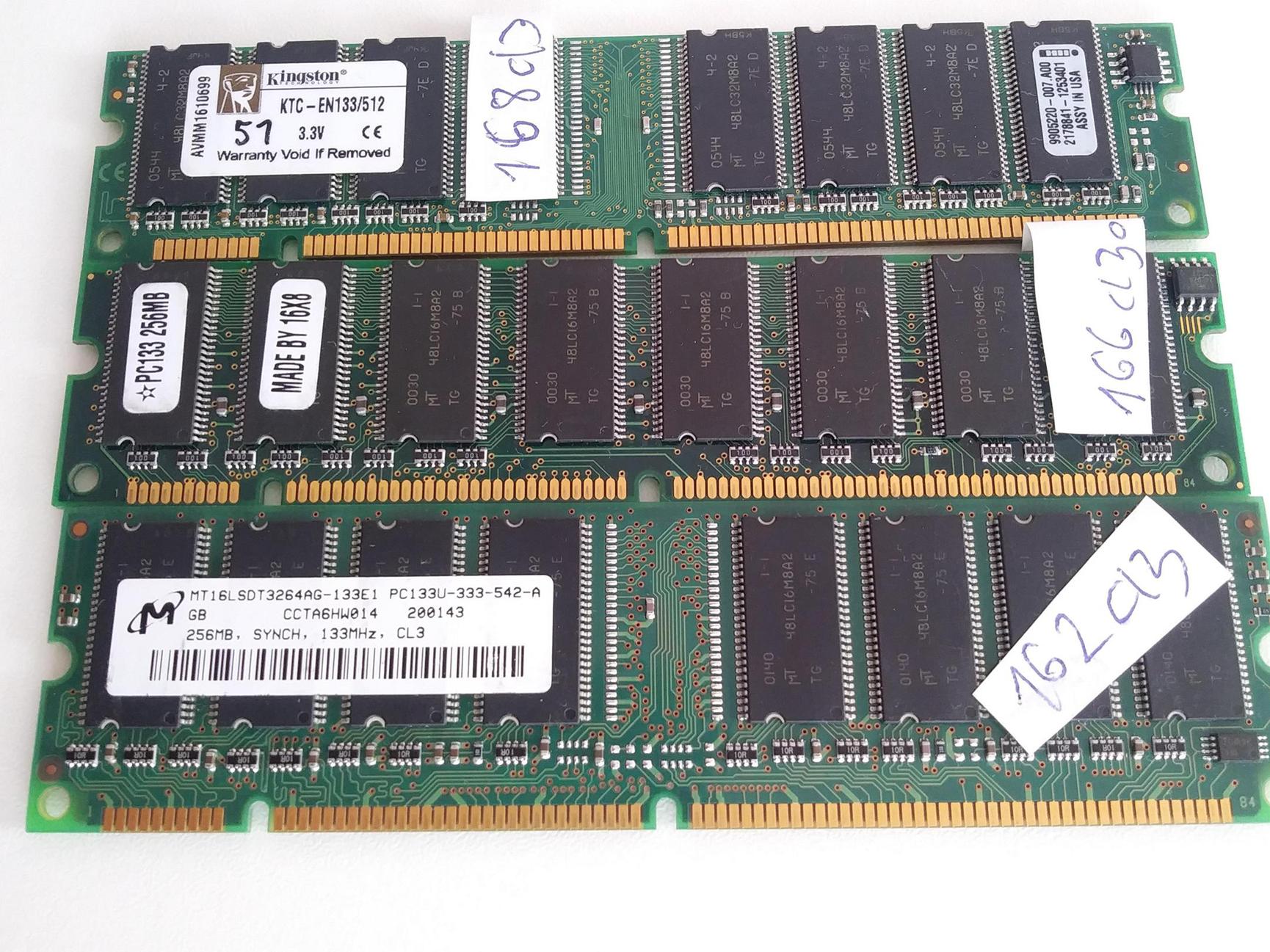
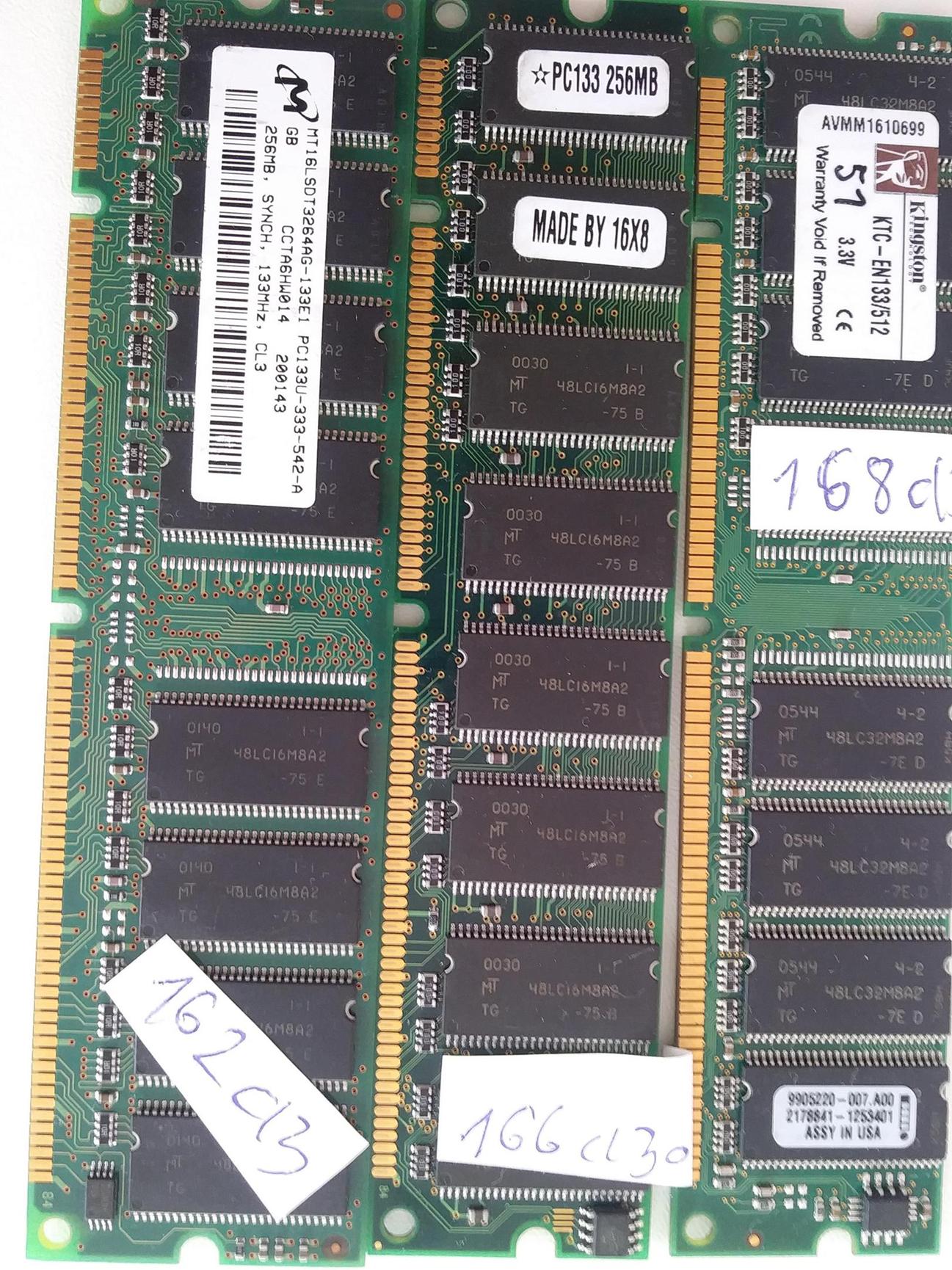
Samsungs:
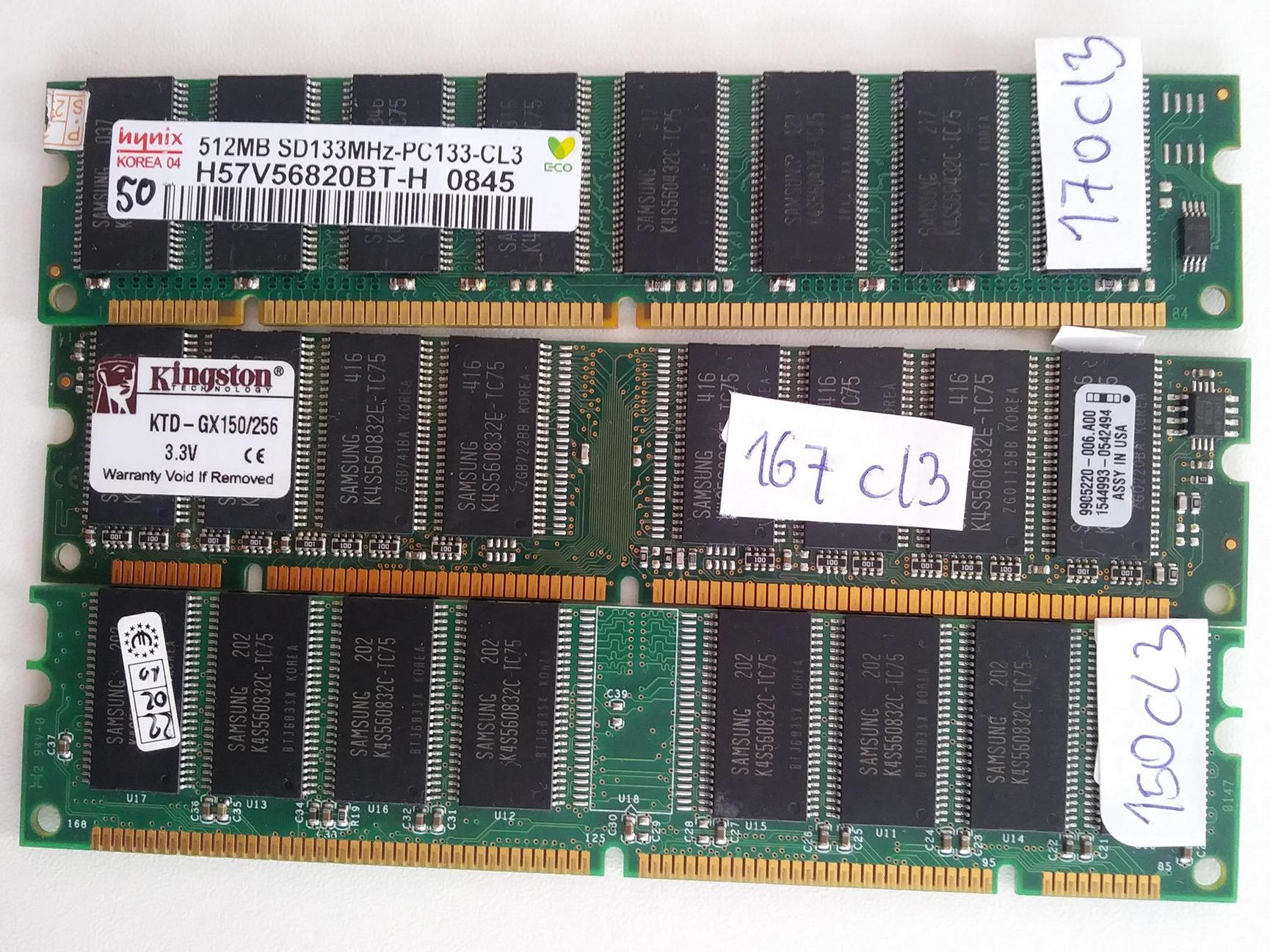
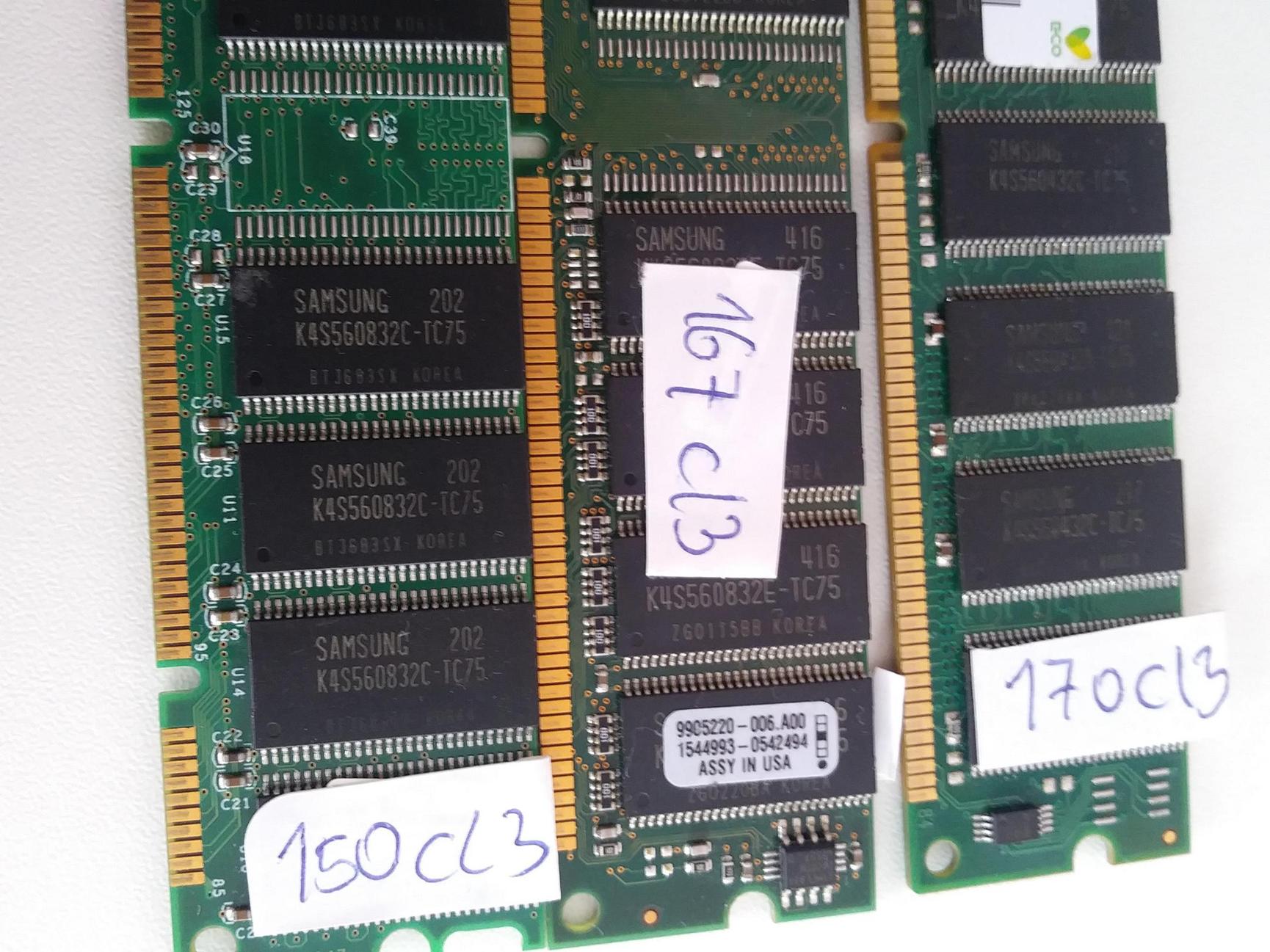
MOSELs:
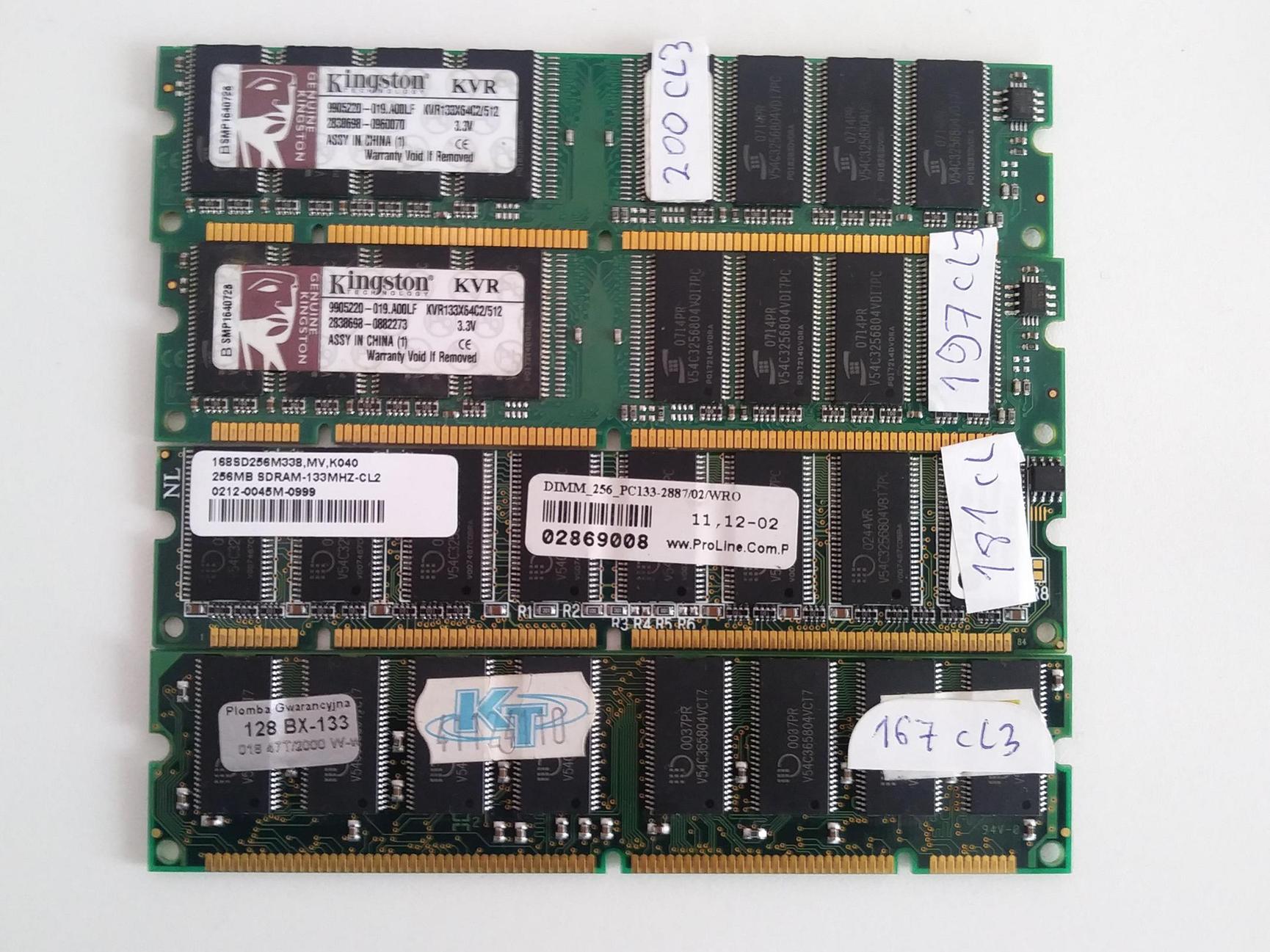
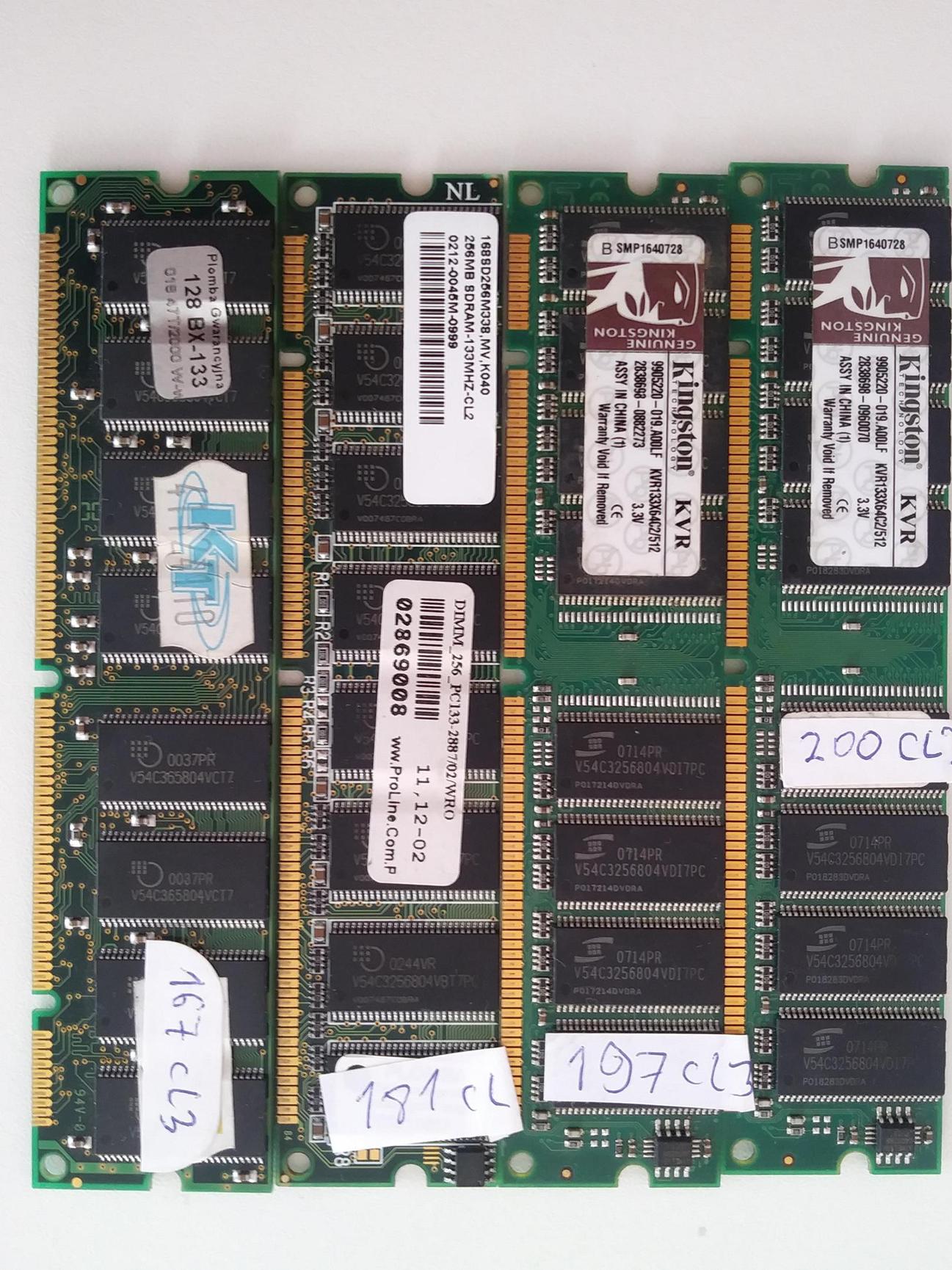
That’s all. I hope you liked it and find it useful in a way 😉 If yes, then please tell me about your experience with overclocking SDR RAM.
